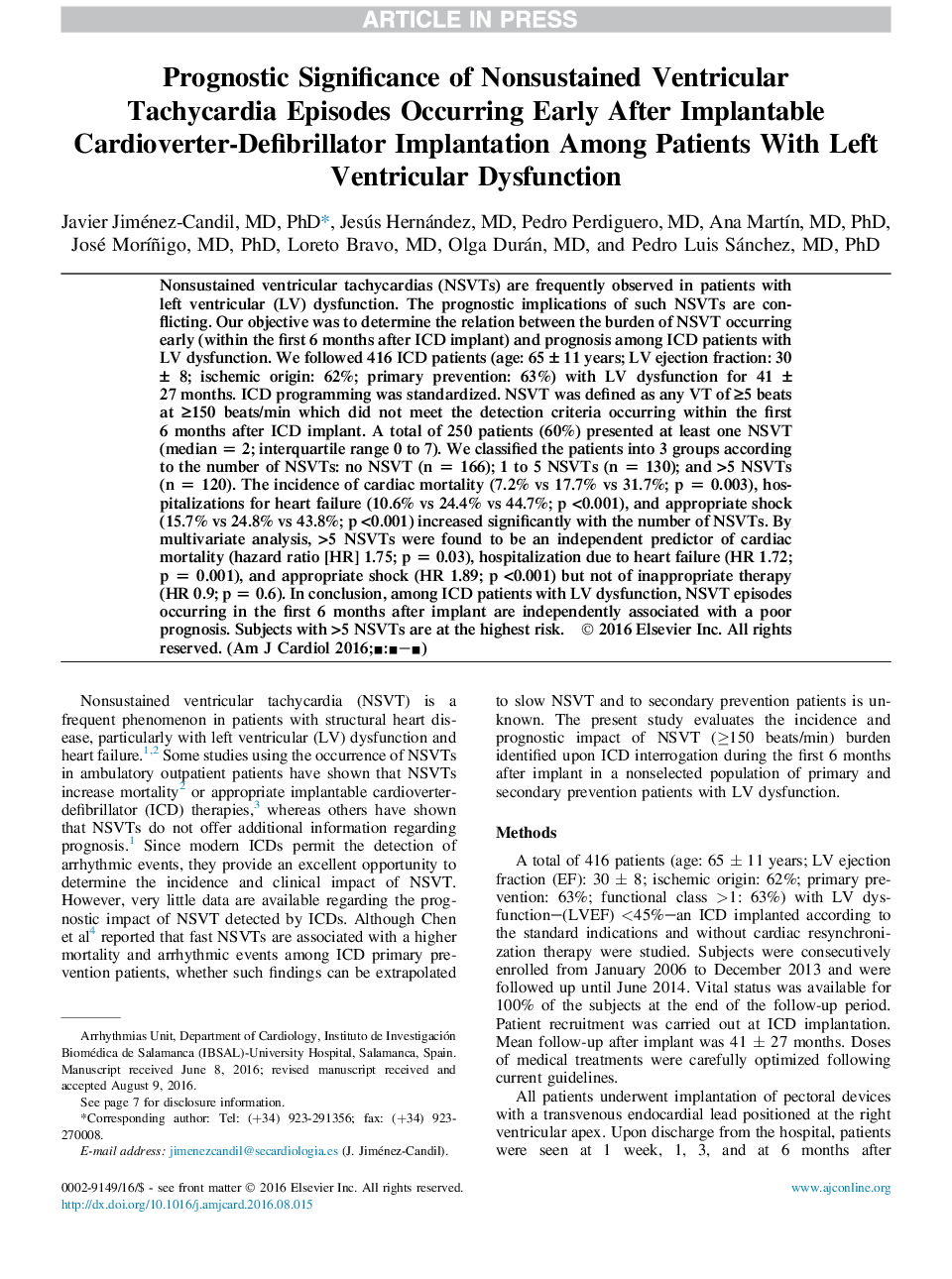| Article ID | Journal | Published Year | Pages | File Type |
|---|---|---|---|---|
| 5595528 | The American Journal of Cardiology | 2016 | 8 Pages |
Abstract
Nonsustained ventricular tachycardias (NSVTs) are frequently observed in patients with left ventricular (LV) dysfunction. The prognostic implications of such NSVTs are conflicting. Our objective was to determine the relation between the burden of NSVT occurring early (within the first 6 months after ICD implant) and prognosis among ICD patients with LV dysfunction. We followed 416 ICD patients (age: 65 ± 11 years; LV ejection fraction: 30 ± 8; ischemic origin: 62%; primary prevention: 63%) with LV dysfunction for 41 ± 27 months. ICD programming was standardized. NSVT was defined as any VT of â¥5 beats at â¥150 beats/min which did not meet the detection criteria occurring within the first 6 months after ICD implant. A total of 250 patients (60%) presented at least one NSVT (median = 2; interquartile range 0 to 7). We classified the patients into 3 groups according to the number of NSVTs: no NSVT (n = 166); 1 to 5 NSVTs (n = 130); and >5 NSVTs (n = 120). The incidence of cardiac mortality (7.2% vs 17.7% vs 31.7%; p = 0.003), hospitalizations for heart failure (10.6% vs 24.4% vs 44.7%; p <0.001), and appropriate shock (15.7% vs 24.8% vs 43.8%; p <0.001) increased significantly with the number of NSVTs. By multivariate analysis, >5 NSVTs were found to be an independent predictor of cardiac mortality (hazard ratio [HR] 1.75; p = 0.03), hospitalization due to heart failure (HR 1.72; p = 0.001), and appropriate shock (HR 1.89; p <0.001) but not of inappropriate therapy (HR 0.9; p = 0.6). In conclusion, among ICD patients with LV dysfunction, NSVT episodes occurring in the first 6 months after implant are independently associated with a poor prognosis. Subjects with >5 NSVTs are at the highest risk.
Related Topics
Health Sciences
Medicine and Dentistry
Cardiology and Cardiovascular Medicine
Authors
Javier MD, PhD, Jesús MD, Pedro MD, Ana MD, PhD, José MD, PhD, Loreto MD, Olga MD, Pedro Luis MD, PhD,
